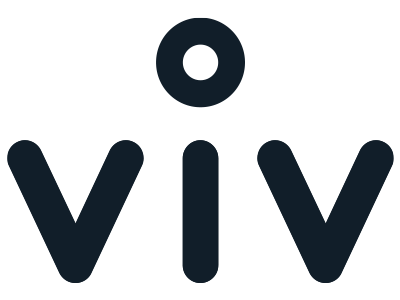The fear of breast cancer has been the largest barrier to women using HRT for 20 years
“50 years of study has failed to conclusively prove cause-and-effect between HT and breast cancer with the preponderance of evidence supporting benefits over risks with amelioration of downstream morbidity and mortality.”
Hodis HN, Sarrel PM. Menopausal hormone therapy and breast cancer: what is the evidence from randomized trials? Climacteric. 2018
Breast cancer is the most common concern for females and their doctors when considering hormonal therapy (HT) for menopausal symptoms and other ongoing health benefits. If you are worried about the use of menopausal hormones because you fear breast cancer, you need to be fully informed. Unfortunately, that comes with a bit of science-speak, so buckle in.
Most of this scare originates from a sensational and negative media headline released in 2002 regarding a very important and expensive study called the Women’s Health Initiative (WHI). Given that a single research finding (published under controversy and released to the press prior to medical review) has had such a massive impact on the use of HT, we need to take a closer look at it.
This article will cover:
- the WHI study
- media sensationalism
- basic statistical understanding
- additional studies to consider
- summary of your true risks and benefits of HRT.
THE WOMEN’S HEALTH INITIATIVE STUDY
Background
The WHI is a $1 billion study of women in the US that started in the mid 1990’s. At the time, there was some evidence that HT had positive health benefits for females in preventing cardiovascular disease. The WHI looked to explore these potential benefits on the heart – this was called the primary outcome or the main purpose of the study. The study was set up to answer that hypothesis.
The group of women enrolled in the study were recruited specifically to look at that primary outcome – heart disease and HT. (They were not recruited to look at secondary outcomes including breast cancer.)
Characteristics of the study group
- 27,347 females were included
- average age of 63 years
- average time after menopause was 12 years
- 30% of women were obese.
This group was selected because they would be likely to demonstrate the impact on heart disease sooner and thereby reduce the cost of the study, but this group was NOT the typical population of females who consider taking HT under normal circumstances! Females likely to consider taking HT are between 45-55.
Study design
Women were randomly assigned to placebo or hormones. They were not supposed to know what they were taking – a concept called ‘blinding’. Hormones used were non-body-identical formulations – conjugated equine oestrogen (CEE) and medroxyprogesterone acetate (MPA).
Females with no uterus were assigned CEE only or placebo.
Females with a uterus were assigned CEE plus MPA or placebo.
What happened?
A few years into the study, preliminary data triggered a concern about breast cancer in the group of women taking CEE and MPA hormone therapy. As with all studies, there are planned triggers to halt the study if it looks like subjects are being harmed and so this arm of the WHI study was ceased.
A research paper was written in response to the findings, but without the knowledge or the endorsement of the whole research committee. This paper claimed that there was an increased risk of breast cancer in women taking hormone replacement therapy at a relative risk of 1.24. This was not statistically significant. In research speak, this means that this observation could be just as easily explained by chance alone. It is a technical and very sacred scientific concept.
Media interpretation
A medical study ceased based on preliminary cancer findings? That’s news! Say hello to attention-grabbing headlines:
“HRT Can Double Risk of Breast Cancer”
“New Alert Over HRT Links to Breast Cancer”
“The Link Between HRT and Breast Cancer: What You Need to Know”
Sensational headlines took over and the media caused widespread uninformed damage. The media interpreted this finding to say that females had a 24% increased chance of getting breast cancer if they took HRT. Far out that sounds scary… but it is a complete misuse of the statistic and neglects to explain the scientific significance of that statistic.
The risk of the original WHI 2002 paper was misinterpreted and released to the media in a sensational manner before publication (most improper!).
Women threw out their pills. HRT prescriptions dropped by 75%. Drug companies stopped research and education. Doctors forgot how to use and prescribe menopausal hormones.
WOMEN SUFFERED THEIR MENOPAUSE IN SILENCE!
The belief that HT causes breast cancer remains pervasive even today because of this poorly informed media hype.
What does an increased risk of 24% actually mean?
This statistic describes a ‘relative’ risk and not an ‘absolute’ risk. In this study the relative risk of getting breast cancer is 1.24 when you take HT compared to 1.00 if you don’t.
In a study such as this, which had not been designed with breast cancer as the primary outcome, many researchers would suggest that a relative risk less than 2.00-3.00 is likely to be meaningless. This means those showing signs of breast cancer were more likely a result of chance rather than the cause and effect of HT. Compare this to the relative risk of 26 of getting lung cancer if you smoke! (That’s right – 26.00 times more likely, compared to 1.24 times quoted in the original WHI study.)
If a condition is very common, then a small increase in your relative risk is meaningful. If it is less common however, even a large relative risk means very little. We are more interested in the absolute risk, the real world risk of something happening. This is how it works:
Let’s say that one in a million people die by choking. Let’s say that eating apples increases your risk of dying by choking by a relative risk of 5.0.
That makes the absolute or real risk of eating the apple and dying by choking is now 5 in a million whereas people not eating an apple have a risk of 1 in a million.
4 extra people in every million die from choking if they eat an apple.
Most of us would take the risk and eat the apple.
In the real world, 2 in every 1000 females over 50 years of age are diagnosed with breast cancer every year.
An increase in this risk by 24% (relative risk 1.24, assuming this is a true finding) takes that number to 2.48 in every 1000 females. All of a sudden, that 24% increase doesn’t look quite so terrifying.
Here is the lead table for breast cancer risk factors-
Highest risk
- past history of breast cancer
- family history of breast cancer
- older age
Small risk
- obesity
Smallest risk
- not being physically active
- more than 4 alcoholic drinks a week
- taking HT over 5 years.
Let’s do a deeper analysis of the study and its findings.
The study was designed to look at cardiovascular disease.
The subjects were recruited accordingly: generally older and unhealthy in order to see faster results for the primary outcome of cardiovascular disease. This group was not representative of the average people starting HT – average age was 63 and an average 12 years post menopause. The study was not designed for looking at breast cancer and there was no adjustment made for the important variables when considering breast cancer. Whilst the original research design did include methods for statistically analysing the secondary outcomes, such as breast cancer, these agreed methods were not used in the published reports.
No adjustment for confounding variables was made at the beginning of the study.
What this means is the known breast cancer risk factors were not evenly distributed among the groups at the beginning of the research, so that the findings were not actually comparing apples with apples when it comes to breast cancer. They were comparing apples with apples when it came to heart disease. This was because the primary outcome of the study design was cardiovascular disease and not breast cancer.
Compliance rate
54% of women on combined hormone therapies (CEE and MPA) and 42% of women on oestrogen alone (CEE) discontinued therapy, meaning the duration of exposure to hormones was not as long as expected, the impact of which has not been fully explored in the research. These women weren’t even taking the intervention but were included in the final data.
Previous use of hormone therapy
Both placebo and treatment arms included women who had previously taken HT. This is important as it is not highlighted in many of the papers reporting increased risk of cancer. After 11 years, females who had not ever previously had hormone therapy but received CEE and MPA therapy did NOT have any increased incidence of breast cancer in this study (see figure below).
Low breast cancer incidence rate in the control group
The women reported to have increasing rates of breast cancer were compared to a placebo group who had lower rates than the usual population (see figure below). Researchers agreed that this appears to be an outlying finding (not easily explained) but it gives the false impression of an increased risk in the treatment group in comparison. The rate of diagnosis in this group (0.25%) was lower than in anywhere else across the WHI research groups (around 0.35%).
Detection bias
The WHI was a randomly assigned and blinded trial however women taking CEE plus MPA still had a uterus and so would have been aware of any abnormal bleeding (which sometimes occurs on HT) that would have revealed they were on the active hormone therapy and not placebo. Therefore they were not truly blinded. After the trial was ceased women were sent warnings about the risk of breast cancer and underwent a higher level of vigilance and screening. This means that cancers were detected that previously may not have been (we know that 16% of females have breast cancer when they die that was unknown to them – yes , many cancers sit dormant and don’t cause any trouble!). ‘Detection’ bias is well understood when subjects and their doctors are paying a lot of attention! It results in overdiagnosis, and influences the statistics.
Biology
It is likely to take 10 years for most breast cancer cells to become clinically evident. As such the increasing observation of cancers appearing within 3-5 years of beginning the WHI study is hard to explain biologically. Subsequent suggestions about potential links between HT and breast cancer propose that oestrogen (due to its proliferative nature) may cause an existing breast cancer to grow faster and become palpable (this is not the same as causing it). This is still being explored.
The therapy chosen as the intervention
Combined equine oestrogen (commonly sold as Premarin) and medroxyprogesterone acetate, both used orally were the hormones used in the WHI because they were commonly available at the time. Neither of these treatments are what we describe as ‘body-identical’ and the risk profiles assumed to them cannot be automatically attributed to modern formulations.
Other trials and HT benefits
Later publications on the WHI data have reported that oestrogen therapy alone reduces both the risk of breast cancer and dying from breast cancer to a small but statistically significant level. Taking the study combination (CEE plus MPA) is shown to increase breast cancer diagnosis slightly but has no impact on dying from breast cancer (notwithstanding the above methodological research problems on how this risk is quantified).
There is of course more research on the impact of HT on breast cancer:
A Finnish study of 490,000 women using hormone therapy showed breast cancer mortality (actually dying from breast cancer) was statistically significantly reduced in all users especially females between 50 and 59 years with the reduced risk higher in oestrogen only therapy compared with combined oestrogen and progestin users.
French research into body-identical progesterone use did not show an increased risk in breast cancer diagnosis.
Recent UK research showed a very low risk using oestradiol – dydrogesterone (tablet) combination or tibolone and showed that there was no difference in risk profiles at all when women using HT were obese (meaning obesity was a more important risk factor that HRT use).
Summary of current thinking
-
combined Oestrogen and Progestogen (non-body-identical) therapy may slightly increase your risk of getting (but not dying from) breast cancer (similar to drinking alcohol, being physically inactive but less than being obese)
-
for females without a uterus who use oestrogen only, HT may slightly reduce the risk of breast cancer
-
impact of modern body-identical progesterone is currently being researched.
The choice to use hormonal therapy for menopausal and perimenopausal females is a personal one, weighing up the risks against the benefits for each individual according to their preferences. It can be helpful to discuss your thoughts and fears with your doctor when choosing the best option for your body but be aware that even the most caring of GPs may still feel scared to recommend HT (they read the newspaper too!)
This information is for general educational purposes only and does not constitute medical advice. Please see your health professional for advice that is personalised to you.
Key Take Aways
HRT may be associated with a very small risk of breast cancer, but this is still not certain
Being obese is a greater risk
Low physical activity and alcohol provide a similar risk
Research has never shown an increased risk of dying from breast cancer






